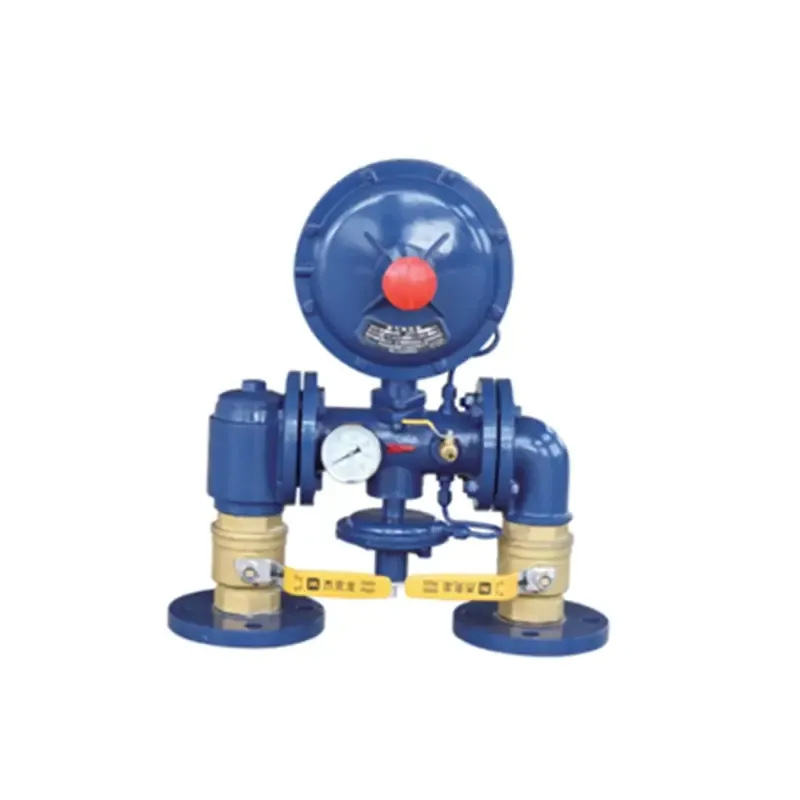
7 月 . 30, 2024 05:07
Back to list
Understanding the Functionality and Applications of Pressure Reducing Valves in Fluid Systems
Understanding Pressure Reducing Valves A Vital Component in Fluid Systems
Pressure reducing valves (PRVs) are essential devices used in various industries to regulate and control fluid pressure. These valves play a critical role in maintaining safe operating conditions for equipment and ensuring the efficiency of fluid systems. Their primary function is to reduce the high inlet pressure of a fluid system to a predetermined lower outlet pressure, providing stability and reliability in numerous applications.
How Pressure Reducing Valves Work
The operation of a pressure reducing valve is straightforward yet effective. Typically, the valve consists of a diaphragm that responds to the changes in pressure. When the inlet pressure exceeds the set point, the diaphragm moves, causing the valve to open and allow some fluid to escape, thereby reducing the pressure downstream. Conversely, when the outlet pressure drops below the desired level, the diaphragm closes, restricting flow and allowing pressure to build up. This automatic adjustment ensures that the downstream pressure remains constant, regardless of fluctuations in the upstream pressure.
Applications of Pressure Reducing Valves
PRVs are widely used across various sectors, including water supply systems, HVAC installations, and industrial manufacturing processes. In municipal water systems, for instance, PRVs are critical for protecting pipes and fixtures from damage caused by excessive pressure. In HVAC systems, they maintain optimal pressure in heating and cooling circuits, enhancing system efficiency and comfort. Additionally, in the manufacturing sector, PRVs are often employed to ensure that machinery and equipment operate within specified pressure ranges, preventing potential failures and maintenance issues.
Advantages of Using Pressure Reducing Valves
The incorporation of PRVs in fluid systems offers several significant advantages
pressure reducing valve

2. Efficiency Maintaining a constant pressure can lead to more efficient fluid flow and energy use, contributing to lower operational costs.
3. Safety PRVs enhance safety by preventing equipment and system failures that could result from pressure spikes, which could lead to leaks or explosions in extreme cases.
4. Flexibility These valves can be adjusted to accommodate various pressure requirements, making them versatile for different applications and operational conditions.
Maintenance and Considerations
While pressure reducing valves are designed to be reliable, regular maintenance is crucial to ensure their effective operation. Accumulation of debris or wear and tear over time can impair their functionality. Routine checks and servicing, including cleaning and replacing worn parts, are essential to maintain optimal performance.
When selecting a PRV, several factors must be considered, such as the application, fluid type, temperature, pressure range, and the specific requirements of the system. It is essential to choose a valve that matches these parameters to ensure reliable and efficient operation.
Conclusion
Pressure reducing valves are a vital component in fluid systems, playing an instrumental role in pressure regulation and system protection. Their ability to maintain constant pressure not only safeguards equipment but also enhances efficiency and safety in various applications. As industries continue to evolve and demand more sophisticated fluid management solutions, the importance of pressure reducing valves will undoubtedly remain paramount. Proper selection and maintenance of these valves will contribute significantly to the performance and longevity of fluid systems across multiple sectors.
Latest news
-
Unlocking The Quality Gas Pressure ReducersNewsNov.01,2024
-
The Role of Gas Pressure Reducing StationsNewsNov.01,2024
-
The Importance and Functionality of Safety Relief ValvesNewsNov.01,2024
-
The Essential Role of Safety Valves in Natural Gas ApplicationsNewsNov.01,2024
-
The Essential Role of Gas Pressure RegulatorsNewsNov.01,2024
-
Enhance Your Premium Gas FiltersNewsNov.01,2024

